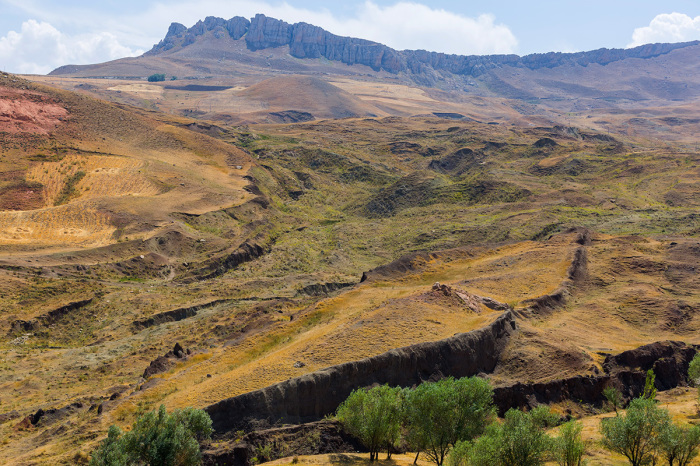Answers in Genesis skeptical of researchers' claims Noah's Ark may have been found in Turkey

Young Earth creationist organization Answers in Genesis, which operates the Ark Encounter attraction in Kentucky, has expressed doubt over researchers' claims that a boat-like formation found in eastern Turkey could likely be the location of Noah's Ark.
Earlier this year, archaeologists associated with a project called Noah's Ark Scans reported that ground-penetrating radar showed unusual formations underneath a boat-like formation found near Mount Tendürek, which they say matched the "exact length" of the ark given in the Old Testament.
Moving forward, a team of Turkish researchers and other supporters plan to do the "most complete geophysical survey and scientific study of this site to date."
In a post online last week, Answers in Genesis President Ken Ham noted that the Durupinar formation site had been speculated to be the site of Noah's Ark as far back as 1959.

In his post, Ham included statements by geologist Andrew Snelling, director of Answers in Genesis' research department. Snelling does not expect the ark to have survived intact to this day.
"With no mature trees available for Noah and his family to build shelters after they got off the Ark, there is every reason to expect they dismantled the Ark (which they didn't need anymore) to salvage timber from it," stated Snelling.
"Besides, this claimed Ark site is in a valley and not on a mountain as described by the Genesis account. It is unclear exactly the identity and location of the 'mountains of Ararat' [Genesis 8:4; notice the plural word 'mountains'], but even this site sits on volcanic lava flows (under the mud flows), which like Mount Ararat itself is a post-Flood volcano that even recently erupted."
Snelling stated that the "geophysical imaging" used by the researchers is ultimately "subject to interpretation based on the bias of the interpreter."
"The reality is that these 'investigators' will never be able to establish what is inside this 'boat-shaped formation' until such time as they actually excavate the site by digging through it," he continued.
"They can theorize all they like about the unusual parallel linear and angular features shown up by the geophysical imaging, but until they actually dig into the site to expose those features for visual identification, their theorizing simply remains that."
Snelling assured that the Ark does not need to be found for believers to "accept it as a historical reality."
"We already have the infallible testimony of the ever-present, all-knowing Creator in His Word," Snelling wrote. "And even if the Ark were found, scoffers would still reject the evidence, dismissing it as a replica built by worshippers to a myth they believed in."
The Noah's Ark Scans researchers have referenced private geophysical surveys conducted in 2014 and 2019 that show "layers and interesting angular structures below the ground."
"The new GPR data shows parallel lines and angular structures 8 to 20 feet down," stated the project on its website.
"These parallel lines and right angles below the surface are something you would not expect to see in a natural, geologic formation. Interestingly, the boat formation has also been confirmed to be the exact length of the ark given in the Bible (Genesis 6:15)."
In an interview with The U.S. Sun, project head Andrew Jones said that the GPR data is "not what you would expect to see if this site is just a solid block of rock or an accumulation of random debris from a mudflow."
"But these results are what you would expect to see if this is a man-made boat matching the Biblical requirements of Noah's Ark," added Jones.
Jones is joined in the project by Ryan Mauro, president of the Doubting Thomas Research Foundation, and Dr. Fethi Yuksel from Istanbul University. Members of the team spent four days in August surveying the site. Jones had previously stated that there won't be an excavation until the "geophysical surveys, core drilling and geological studies are complete."
According to Jones, Yuksel has obtained a permit to work in the area, which will "speed up the process."





























